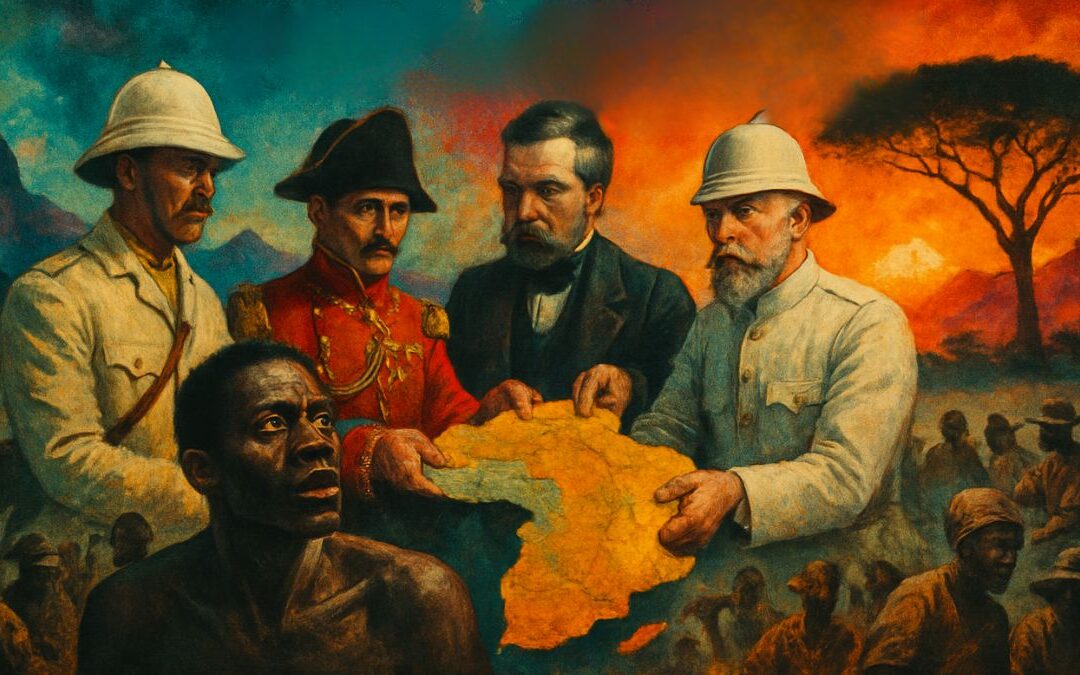- Keywords:
- Key Takeaways:
- Frequently Asked Questions (FAQs):
- What was the societal impact of Jesus’ teachings in his time?
- How did Christianity spread to other continents?
- Were there any written records of Jesus’ life outside the Bible?
- How did early Christians practice their faith under persecution?
- How did Christianity evolve into different denominations?
- What role did women play in early Christianity?
- How did Constantine’s conversion affect the Christian doctrine?
- How did the Bible come to be compiled?
- How did Christianity influence Western civilization?
- How have archaeological discoveries contributed to our understanding of Jesus and early Christianity?
- Myth Buster:
- Myth: Jesus was born on December 25th.
- Myth: The Bible was written by Jesus.
- Myth: All early Christians were persecuted.
- Myth: Christianity spread peacefully without conflict.
- Myth: The apostles were perfect and without flaws.
- Myth: The resurrection of Jesus is universally accepted.
- Myth: Constantine made Christianity the official religion of the Roman Empire.
- Myth: Early Christianity was a uniform, cohesive movement.
- Myth: Paul founded Christianity.
- Myth: The spread of Christianity was rapid and uncontested.
In a quaint, unassuming town called Bethlehem, about 2000 years ago, the world received a guest, in the humblest of settings: a stable. The stars might’ve blinked a little brighter that night, but on Earth, only a handful of shepherds and some wise men took note. Jesus, for that was the baby’s name, had quite an unconventional start for someone who’d change the course of human history.
Raised in Nazareth, Jesus had the upbringing typical of a Jewish boy. He learned carpentry from Joseph, likely built a wonky table or two before getting the hang of it, and attended the synagogue. Nothing too out of the ordinary. That was until around the age of 30, when, at a local wedding, his mother Mary nudged him into turning water into wine. Now, that’s a party trick that won’t be forgotten anytime soon.
Jesus’ miracles, from healing the blind and the sick to raising the dead, quickly made the rounds in the towns. It wasn’t just the supernatural that drew people to him, but his words, the stories and parables he told, and the radical love he preached. Picture a scene: thousands gathered, hanging onto every word as Jesus delivered the Sermon on the Mount. “Blessed are the meek,” he declared, possibly spotting a bemused Roman soldier in the background thinking, “That’s not what we were taught in gladiator school.”
However, not everyone was a fan. The religious leaders felt threatened. Rome was, well, Rome – ever suspicious of potential rebels. The same hands that once waved palm branches in joyous welcome of Jesus would soon demand his crucifixion. Betrayed for a mere 30 pieces of silver by one of his own, Jesus’ fate seemed sealed.
Now, in a gripping turn of events, just when all seemed lost, with Jesus crucified and buried, the stone guarding his tomb was rolled away, and the man who was once dead was alive! Resurrection Sunday, they called it, and it left both followers and skeptics dumbfounded. Jesus had turned the ultimate tragedy into the ultimate victory.
The story could’ve ended here, with Jesus’ ascension into heaven, and it would’ve still been extraordinary. But the tale was just beginning. A group of Jesus’ followers, the apostles, filled with a new-found fire, began to spread his teachings. Remember Peter? The one who once denied knowing Jesus thrice? Well, he became one of the most fervent preachers of Jesus’ message.
But the real surprise was Saul, a zealous persecutor of Christians. On a trip to Damascus, Saul was struck blind by a divine light and heard Jesus’ voice. That’s one way to get someone’s attention! Saul became Paul, trading in his resume of Christian-persecutor for Christian-evangelist. His letters to early Christian communities form a significant portion of the New Testament.
Christianity spread like wildfire, despite brutal persecutions. Imagine being a Roman in the Colosseum, expecting a show, only to see Christians singing hymns before meeting their fate with lions. It was enough to give anyone pause. And pause they did. From the houses in Jerusalem to the grand arenas of Rome, the message of love, hope, and redemption found its place.
Emperors tried to squash it, philosophers tried to debate it, but by the 4th century, a Roman Emperor named Constantine would not only convert to Christianity but also make it the state religion. Oh, how the tables had turned! Basilicas began to rise, and the once underground faith was now the talk of the empire.
In time, Christianity would traverse continents, face challenges, and evolve in various ways. But through it all, the heart of the story remained: a child born in Bethlehem, who taught love and sacrificed his life for humanity, sparking a flame that would light up the world.
And as for those who still wonder about the carpenter who started it all? Well, as the saying goes, “He had big shoes to fill.” Wooden sandals, actually. And fill them he did, and then some.
Keywords:
- Bethlehem: A small town in Judea, notable as the birthplace of Jesus Christ, sparking the beginnings of Christianity.
- Miracles: Supernatural acts attributed to Jesus, such as healing the sick and turning water into wine, pivotal in establishing his divine identity.
- Sermon on the Mount: A significant teaching moment where Jesus delivered revolutionary ideas of love, peace, and morality that form the core of Christian ethics.
- Crucifixion: The execution of Jesus by nailing him to a cross, a pivotal event in Christian belief symbolizing Jesus’ sacrifice for humanity’s sins.
- Resurrection Sunday: The Christian belief that Jesus rose from the dead three days after his crucifixion, proving his divinity and forming the foundation of Christian faith.
- Apostles: The primary disciples of Jesus who played a critical role in spreading his teachings and establishing early Christian communities.
- Paul: Originally Saul, a persecutor of Christians who, after a divine encounter, became one of the most influential apostles.
- Roman Persecutions: The systemic and brutal attempt by Roman authorities to suppress and eliminate the growing Christian faith.
- Constantine: The Roman Emperor who converted to Christianity and played a significant role in its legitimization and spread across the Roman Empire.
- Basilicas: Large, ornate churches, symbolic of the transition of Christianity from a persecuted faith to the established religion of the empire.
Key Takeaways:
- Jesus, born in Bethlehem, became a central figure in world history through his teachings and miracles.
- Despite facing opposition and crucifixion, the belief in Jesus’ resurrection fueled the growth of Christianity.
- The apostles and converted believers like Paul were instrumental in spreading Christianity.
- Despite severe Roman persecutions, Christianity grew and eventually became the Roman Empire’s state religion under Emperor Constantine.
- The teachings of love, sacrifice, and redemption continue to influence billions of followers worldwide.
Frequently Asked Questions (FAQs):
What was the societal impact of Jesus’ teachings in his time?
Jesus introduced revolutionary teachings centered on love, forgiveness, and moral living. These teachings often clashed with the existing societal norms, challenging both the religious and political establishments. He advocated for compassion and equality, ideals that garnered both admiration and opposition.
How did Christianity spread to other continents?
Apart from the initial spread within the Roman Empire, Christian missionaries traveled great distances, reaching Africa, Asia, and eventually the Americas. They spread the gospel, established churches, and converted people from diverse cultures and religions.
Were there any written records of Jesus’ life outside the Bible?
Yes, several non-Christian sources, including Roman and Jewish historians like Tacitus and Josephus, have documented aspects of Jesus’ life, death, and the early Christian movement, corroborating biblical accounts.
How did early Christians practice their faith under persecution?
Early Christians often met secretly in homes and catacombs to worship, share teachings, and support one another. They used symbols like the fish to identify themselves secretly.
How did Christianity evolve into different denominations?
Various theological, cultural, and political factors contributed to the division within Christianity. Over centuries, different interpretations of scriptures and practices led to the formation of distinct denominations, each with unique beliefs and traditions.
What role did women play in early Christianity?
Women were active participants in early Christian communities. They hosted gatherings, contributed resources, and played essential roles in the spread and establishment of the faith.
How did Constantine’s conversion affect the Christian doctrine?
Constantine’s conversion led to the legitimization of Christianity in the Roman Empire. It provided Christians the freedom to practice openly and led to the Council of Nicaea, which addressed and unified several doctrinal issues.
How did the Bible come to be compiled?
The Bible is a collection of sacred texts written over centuries. The process of canonization involved rigorous selection, where texts believed to be inspired were compiled into the Old and New Testaments.
How did Christianity influence Western civilization?
Christianity influenced Western civilization in various ways, including art, literature, philosophy, ethics, law, and social structures. It introduced concepts of human dignity, rights, and equality that underpin Western thought.
How have archaeological discoveries contributed to our understanding of Jesus and early Christianity?
Archaeological findings, including ancient manuscripts, artifacts, and structures, have provided valuable insights into the historical context, culture, and practices of Jesus and early Christianity. They help corroborate and expand upon biblical and historical records.
Myth Buster:
Myth: Jesus was born on December 25th.
Reality: The exact date of Jesus’ birth is unknown. December 25th was chosen as a date to celebrate Christmas, aligning with existing pagan festivals.
Myth: The Bible was written by Jesus.
Reality: The Bible, comprising the Old and New Testaments, was written by various authors over centuries. Jesus did not write any part of the Bible; instead, his teachings and life were documented by his followers.
Myth: All early Christians were persecuted.
Reality: While many faced persecution, the intensity and occurrence varied across time and regions. Some Christians lived in relative peace and obscurity.
Myth: Christianity spread peacefully without conflict.
Reality: The spread of Christianity involved complex dynamics, including peaceful conversions, societal conflicts, and political interventions.
Myth: The apostles were perfect and without flaws.
Reality: The apostles, like all humans, had flaws and made mistakes. The New Testament documents their doubts, fears, and failures alongside their faith and achievements.
Myth: The resurrection of Jesus is universally accepted.
Reality: The resurrection is a core Christian belief but is not universally accepted. It is a matter of faith and is debated among scholars, historians, and theologians.
Myth: Constantine made Christianity the official religion of the Roman Empire.
Reality: While some believe that Constantine did that, there is a lot of historical evidence that shows that Constantine legalized and favored Christianity, but it was Emperor Theodosius who made it the state religion later.
Myth: Early Christianity was a uniform, cohesive movement.
Reality: Early Christianity was diverse with varied interpretations and practices. Over time, certain beliefs and practices were standardized.
Myth: Paul founded Christianity.
Reality: Paul was instrumental in spreading Christianity and clarifying doctrine, but the faith was established by Jesus and his direct followers.
Myth: The spread of Christianity was rapid and uncontested.
Reality: The spread of Christianity was gradual and met with significant challenges, including persecution, doctrinal disputes, and societal opposition. Each phase of expansion involved complex historical, cultural, and political dynamics.










0 Comments